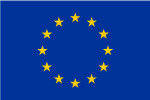What are nitrates and nitrites and what foods are high in them?
Last Updated : 01 October 2022Nitrates and nitrites – and particularly their use as food additives – have raised some concerns among consumers for their potential to harm health. But is it true that they are not safe? And what foods are high in nitrate?
What are nitrates/nitrites?
Simply put, nitrates and nitrites are naturally occurring chemical compounds that contain oxygen and nitrogen. Nitrates are naturally present in the soil, water, plants and to a lesser extent in the air due to air pollution. They can then be converted to nitrites by specific bacteria both in nature and in our bodies.
Both these compounds are naturally present in fruit and vegetables and are also legally used as food additives in the EU in the form of sodium and potassium salts of nitrite and nitrate (E 249-252). They’re commonly used for curing meat and other perishable foods and play an important role in preventing botulism.
What foods are high in nitrates and nitrites?
Nitrate is found naturally in vegetables - particularly in leafy vegetables like spinach, lettuce and rocket - which represent our main source of nitrate in the diet, followed by preserved meat and drinking water. In turn, our main sources of nitrites in the diet are cured and processed meats.
Nitrates and nitrites salts are added to meat, fish and cheese for preservation and to prevent the growth of Clostridium botulinum - the bacterium responsible for life-threatening botulism. They’re also used in meat to keep it red and give flavour and nitrates specifically, are used to prevent certain cheeses from bloating during fermentation.
Nitrate can also enter the food chain as an environmental contaminant mainly in water, due to its use in intensive farming methods, livestock production and sewage discharge.
Are nitrates and nitrites in food safe?
Nitrite and nitrate from food are quickly absorbed by the body, most of which are removed as nitrate. However, part of the nitrate we absorb is converted into nitrite by specific bacteria in the saliva.
When present in excessive amounts in the body, nitrite hinders the ability of our red blood cells to transport oxygen in the body. Nitrate in food (and nitrate converted to nitrite in the body) may also contribute to the formation of a group of compounds called nitrosamines, some of which are carcinogenic (cancer-causing).
In 2017, the EFSA re-assessed the safety of nitrites and nitrates as food additives. Based on the evidence available they concluded that the current levels at which nitrates and nitrites can be added to foods in Europe are safe for consumers.
Researchers have verified that the amount of nitrate and nitrite we get from food additives in our diet is within safe levels. For example, they’ve estimated that our exposure to nitrate only from food additives was less than 5% of the overall exposure to nitrate in food and did not go beyond the Acceptable Daily Intake (ADI). They’ve also concluded that when nitrites are used at approved levels in foods, they don’t contribute to levels of nitrosamines that can threaten health.
However, the same may not be true for children with diets high in foods with added nitrites as consumption can go above safe levels. Similarly, nitrite unintentionally present in meat products from other sources such as environmental contamination can also cause the formation of nitrosamines and potentially trigger health concerns for consumers. Future research is expected to provide more accurate information to identify and understand potential health risks from this.
In the meantime, some countries may be still willing to push for the reduction of the use of these compounds in food. For example, in 2022, the French Agency for Food, Environmental and Occupational Health & Safety (ANSES) recommended new measures to further cut down the amount of nitrites and nitrates added to delicatessen meat. The goal is to use “levels that are as low as reasonably achievable” under the strict condition that other measures are taken to ensure that the food is equally safe and free from bacterial contamination. The agency is also working on recommendations to control nitrate levels in water and soil.
 This article was produced in collaboration with FoodSafety4EU as part of a joint food additive campaign. FoodSafety4EU has received funding from the European Union’s Horizon 2020 Research and Innovation programme under Grant Agreement No. 101000613.
This article was produced in collaboration with FoodSafety4EU as part of a joint food additive campaign. FoodSafety4EU has received funding from the European Union’s Horizon 2020 Research and Innovation programme under Grant Agreement No. 101000613.
References
- World Health Organization (WHO). 2003. Nitrate and nitrite in drinking-water.
- European Food Safety Authority. 2017. Nitrites and nitrates added to food.
- European Food Safety Authority. 2010. Scientific Opinion of the Panel on Contaminants in the Food chain. EFSA Journal 2010;8(12):1935.
- European Food Safety Authority website. Newsroom section. EFSA balances the consumer risks from nitrate in vegetables with the benefits of a balanced diet high in vegetables and fruit. Accessed May 2022.
- Hord, G.N., Tang, Y., Bryan, S.N., 2009. Food sources of nitrates and nitrites: the physiologic context for potential health benefits. The American journal of clinic nutrition, 90(1), pp.1-10.
- French Agency for Food, Environmental and Occupational Health & Safety (ANSES) website. Reducing dietary exposure to nitrites and nitrates. Accessed August 2022.



